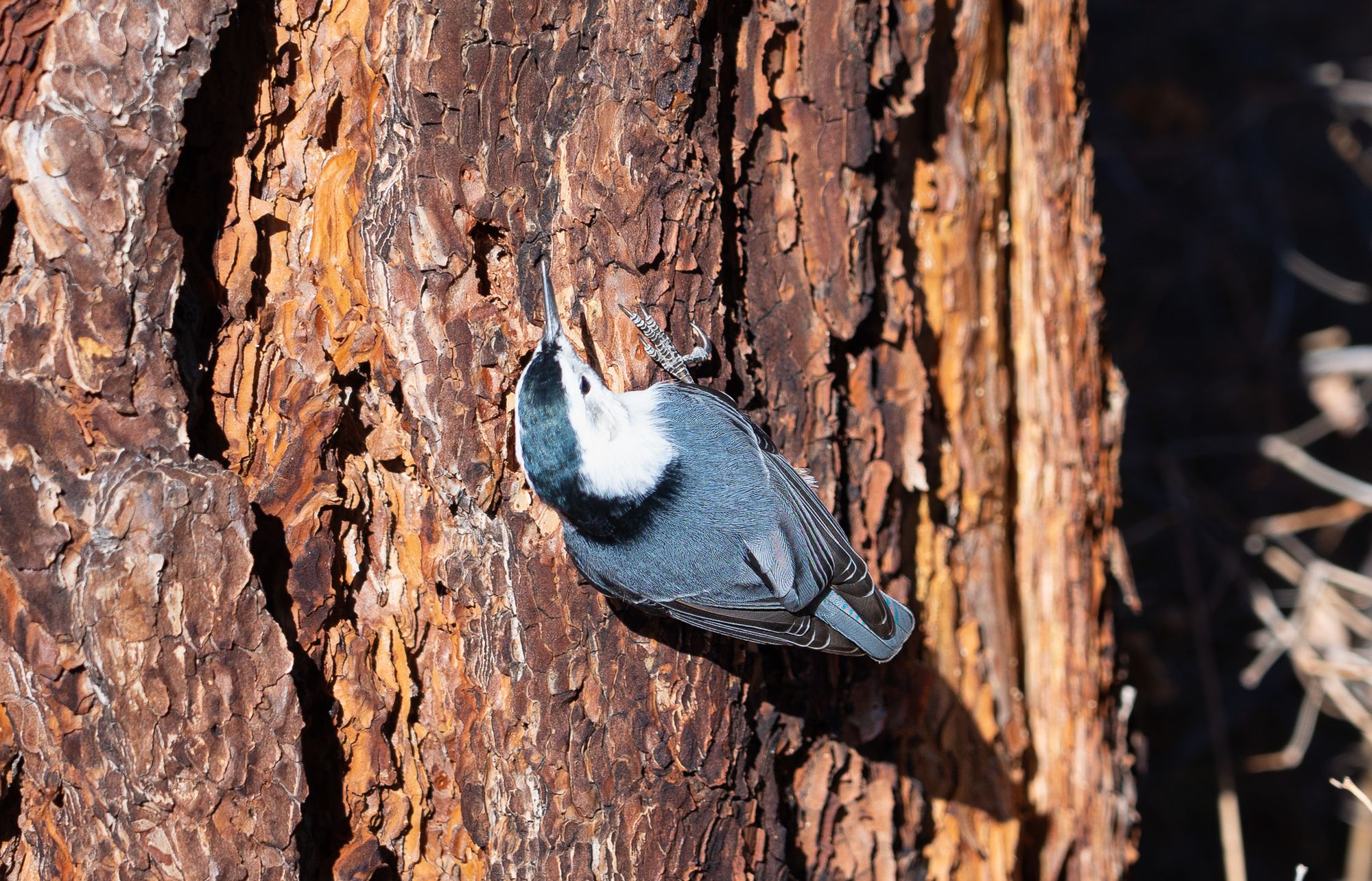April 23-29, 2023
The Green Flush
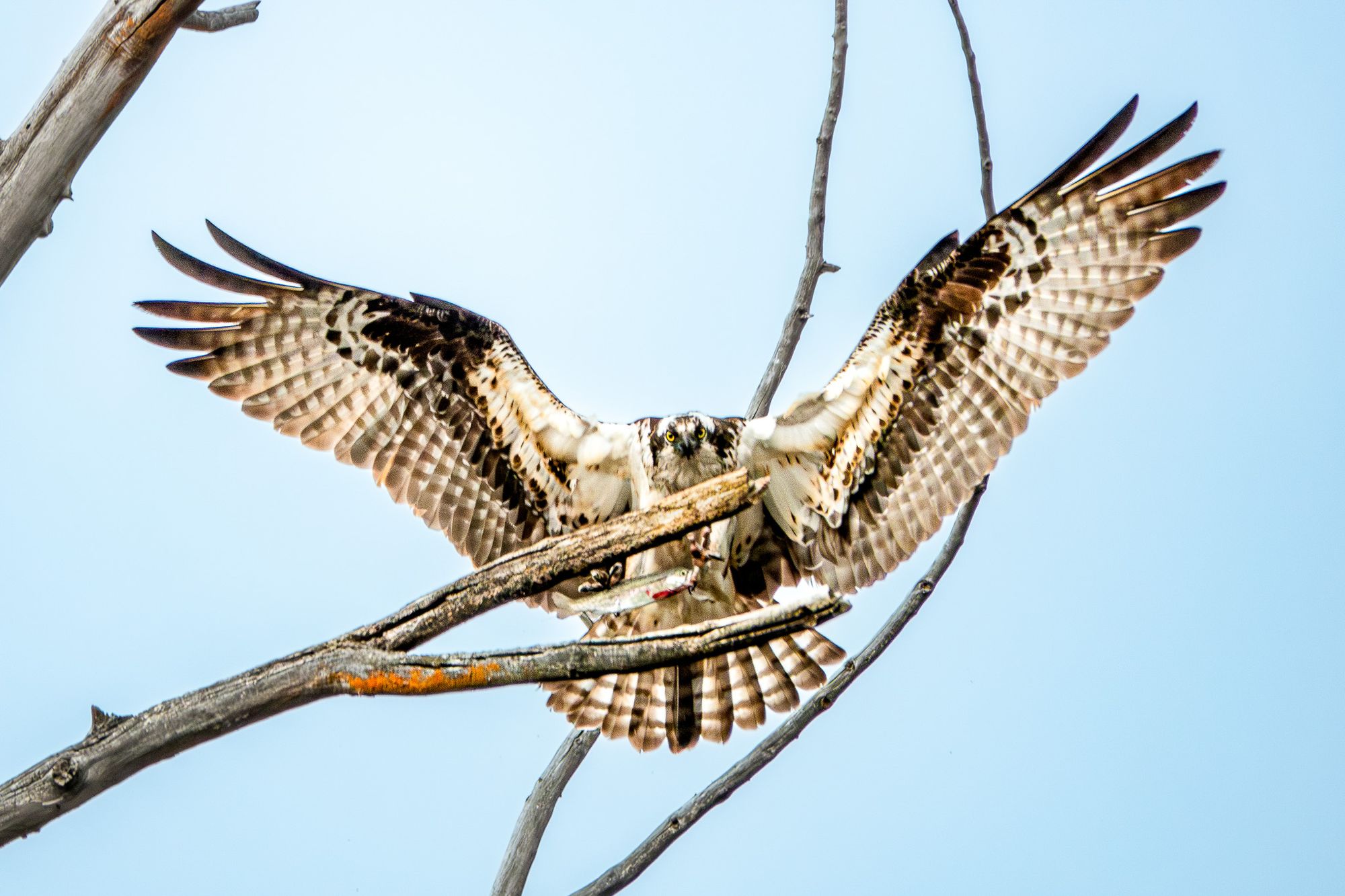
Birds, birds, and more birds. And yes, lots of flowers too.
Week in Review
Look anywhere this week and you'll have noticed a dramatic greening up of the entire landscape, from budding shoots covering distant hills to the flush of tender new leaves transforming entire stands of cottonwoods and aspens.
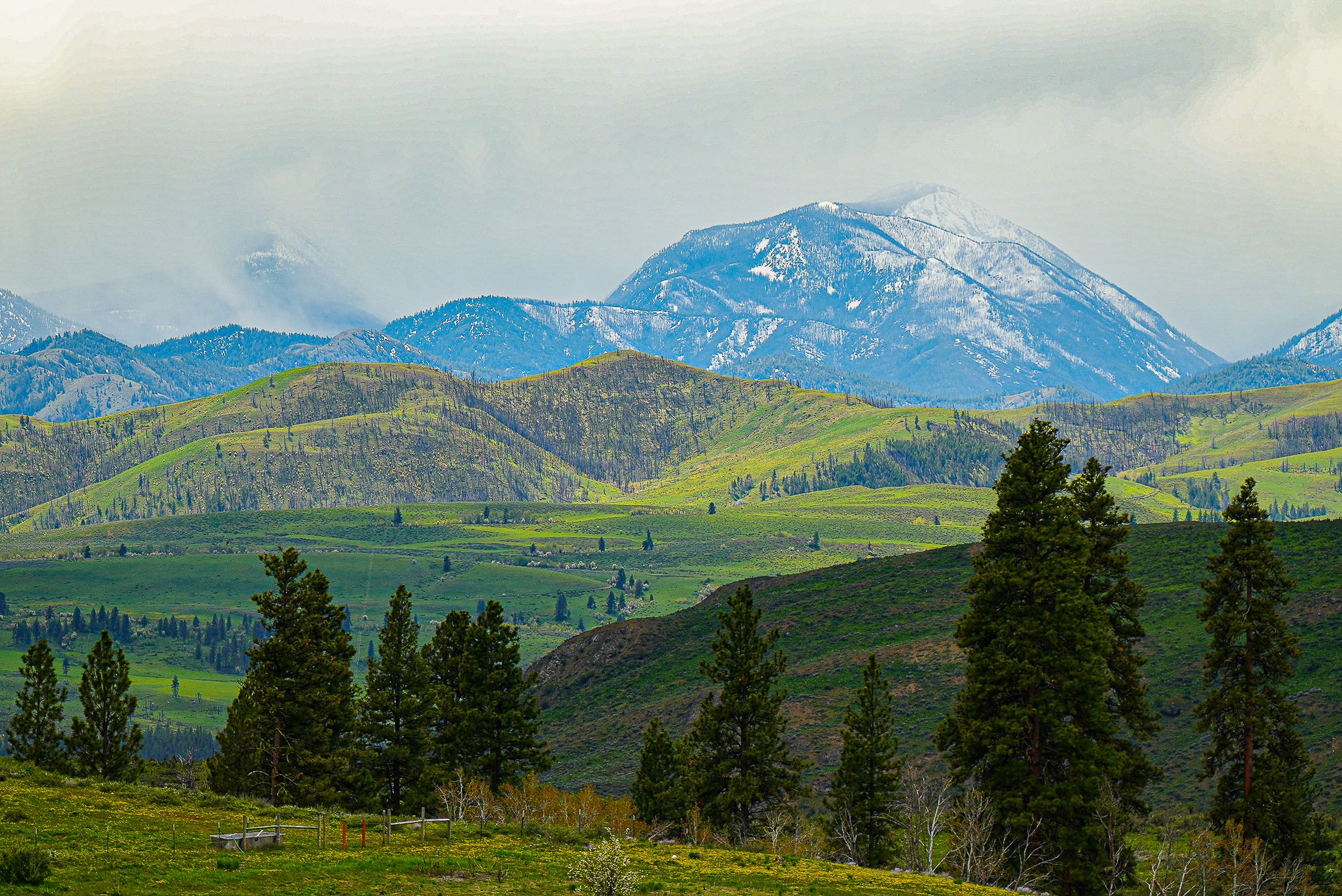
Flowers are now scattered almost everywhere but in some locations they have started to paint hillsides with swathes of color. Unless this year is a bust (like last year when the flowers didn't put on much of a show), it seems a bit early for vast carpets of balsamroots to make an appearance, but you can already see big patches of yellow in some areas.
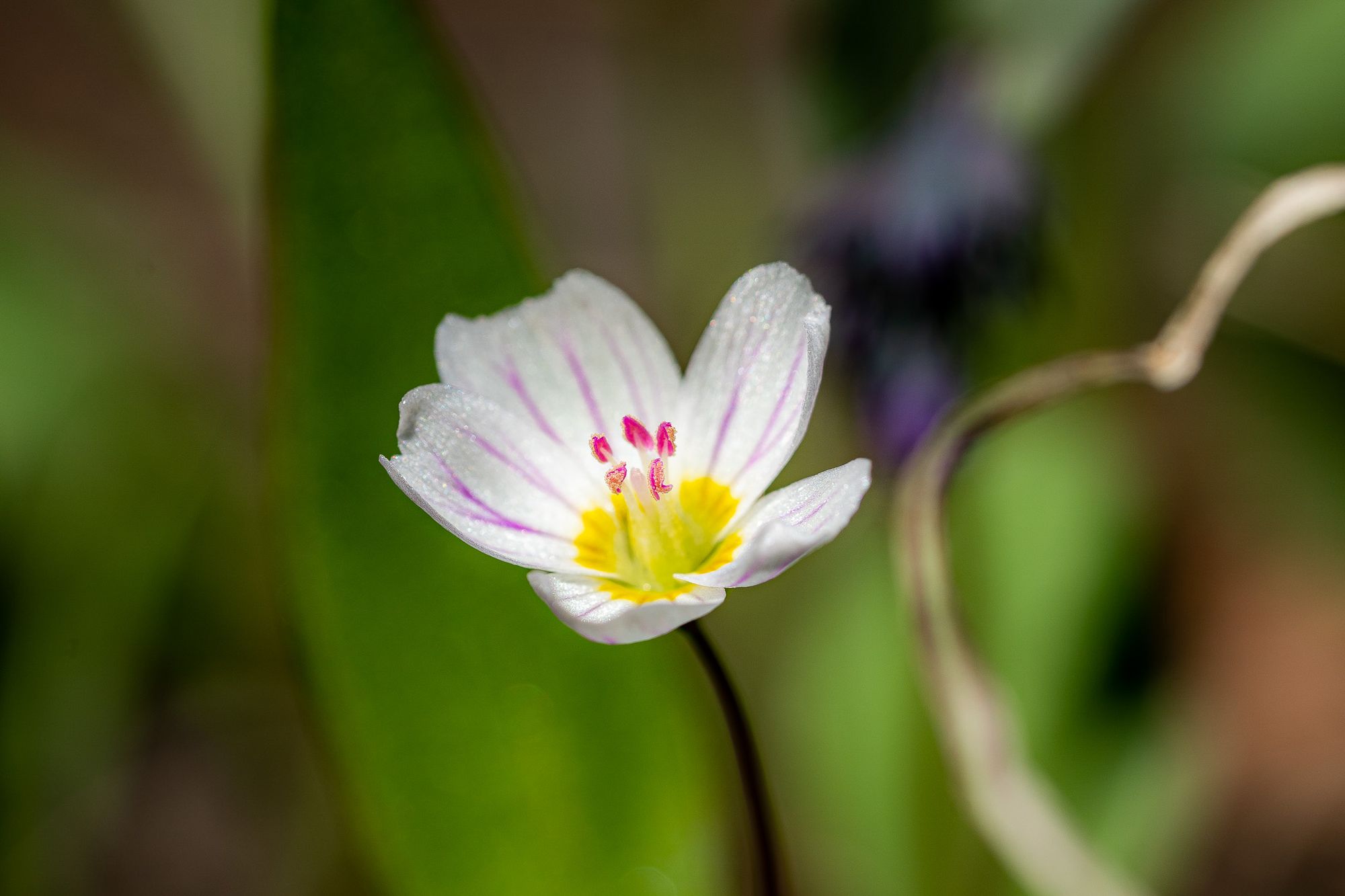
Walk any local trail right now and you're sure to see patches of bright bluebells, while shaded hillsides are absolutely covered in white spring beauty!
At the same time, shrubs are also starting to leaf out. It takes a careful eye to notice that bitterbrush are getting new tiny leaves, but it's hard to miss the explosion of soft green leaves on currants.
Birds have been a very dynamic presence this past week. One lonely white-crowned sparrow that was hanging around last week was joined by seven more on April 23, then dozens more on April 25, and now it seems like they're everywhere. Their close relative, a single golden-crowned sparrow, made an appearance on April 28. If last year was any indication, these sparrows will keep bunching up in even larger numbers and getting increasingly restless as they eagerly wait for high mountain meadows to melt out.
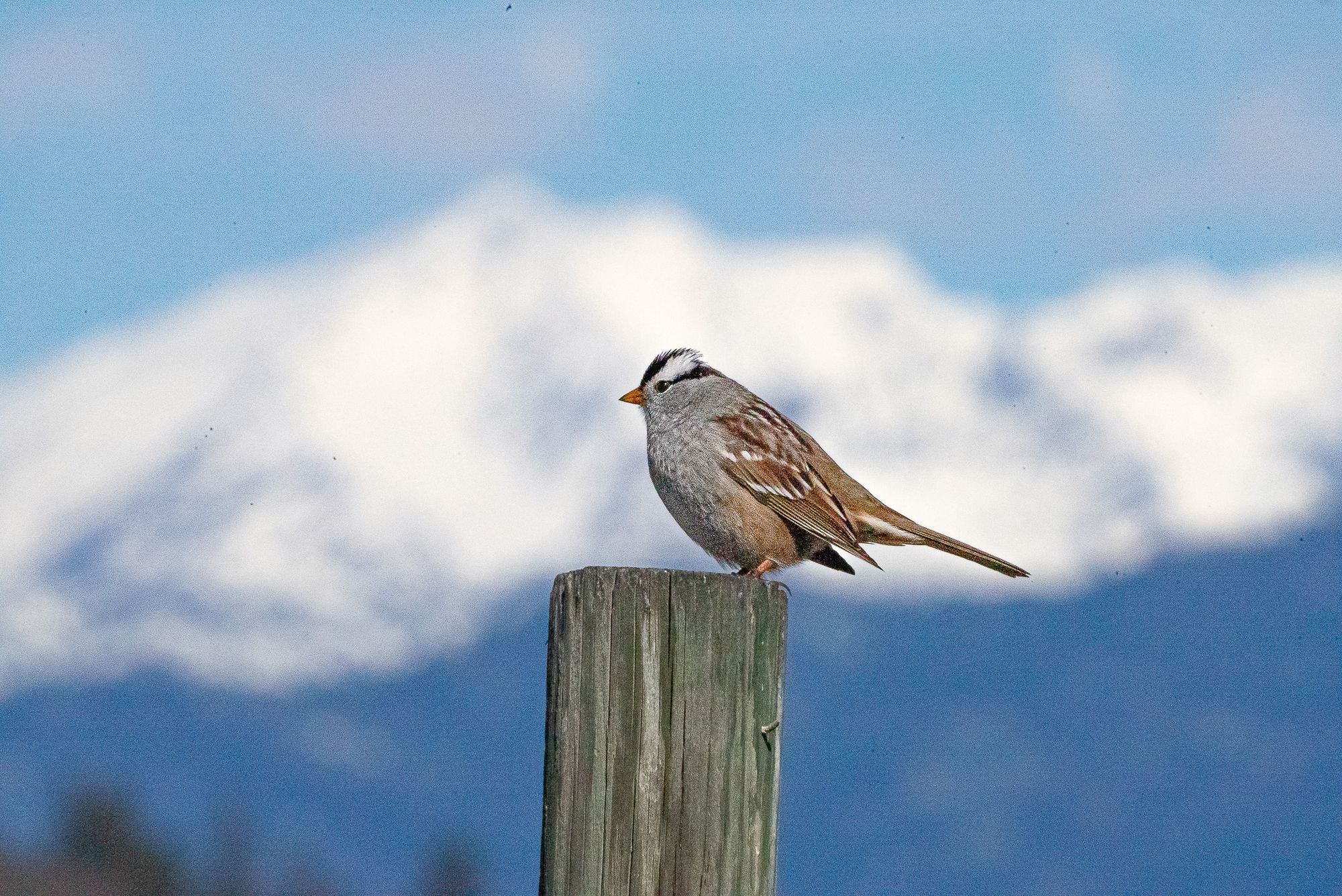
On April 23, the beaver pond at Sun Mountain had so many birds singing and vocalizing that it almost sounded fake. The list of species making some kind of noise during a short walk included red-winged blackbird, black-capped chickadee, spotted towhee, Townsend's solitaire, ruby-crowned kinglet, yellow-rumped warbler, Canada goose, pied-billed grebe, red-breasted sapsucker, mallard, hairy woodpecker, song sparrow, ruffed grouse, green-winged teal, osprey, barrow's goldeneye, ring-necked duck, European starling, American robin, great horned owl, vesper sparrow, and northern flicker. Wow, it's definitely time for a walk at the beaver pond!
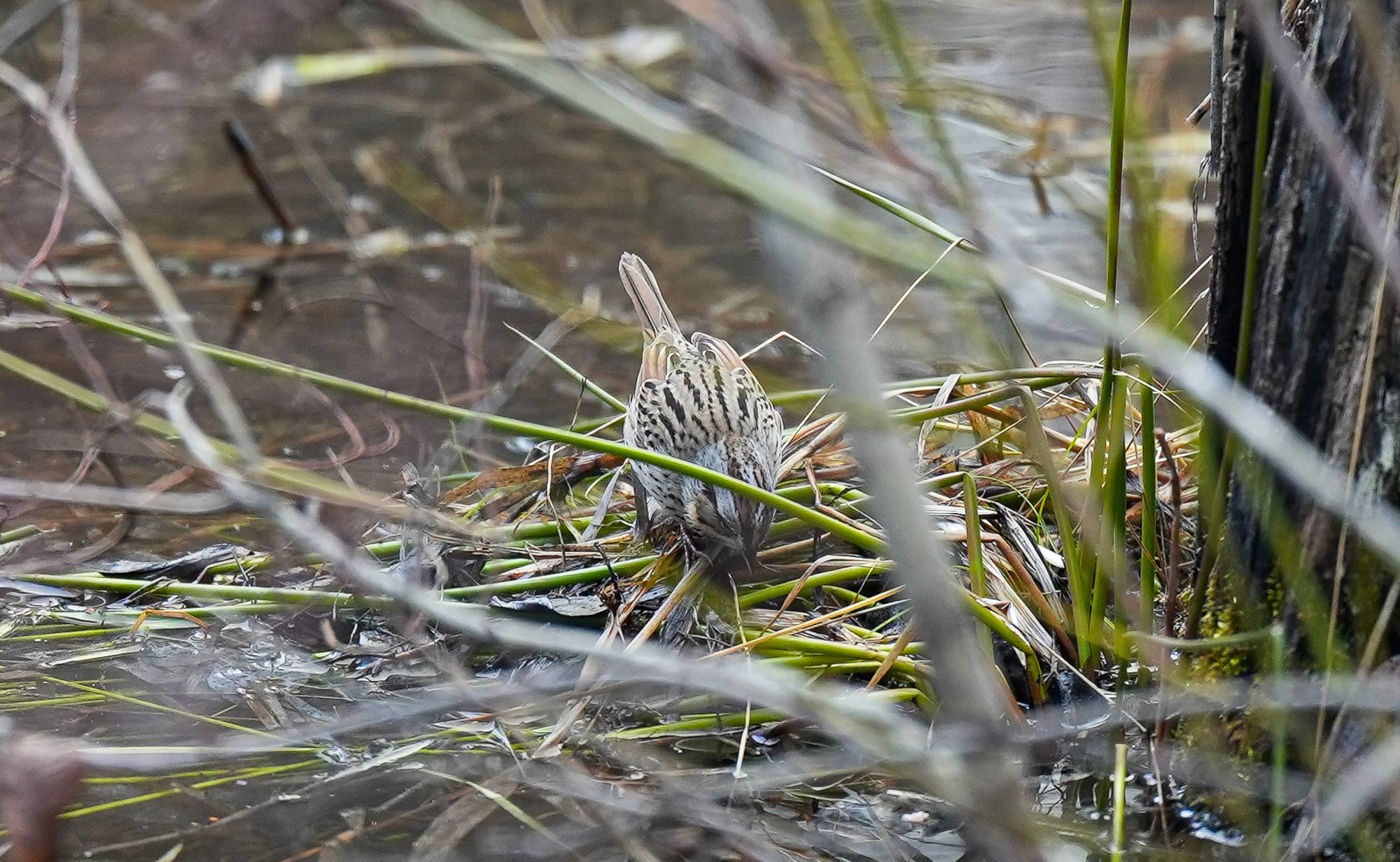
While a handful of local blackbirds have been singing for several weeks now, a large group of red-winged blackbirds descended on our feeders on April 22 and it's very likely they were migrants or new arrivals. In the midst of this group were two male yellow-headed blackbirds, then the next day eight male yellow-headed blackbirds joined the flock, and the next day they were all gone.
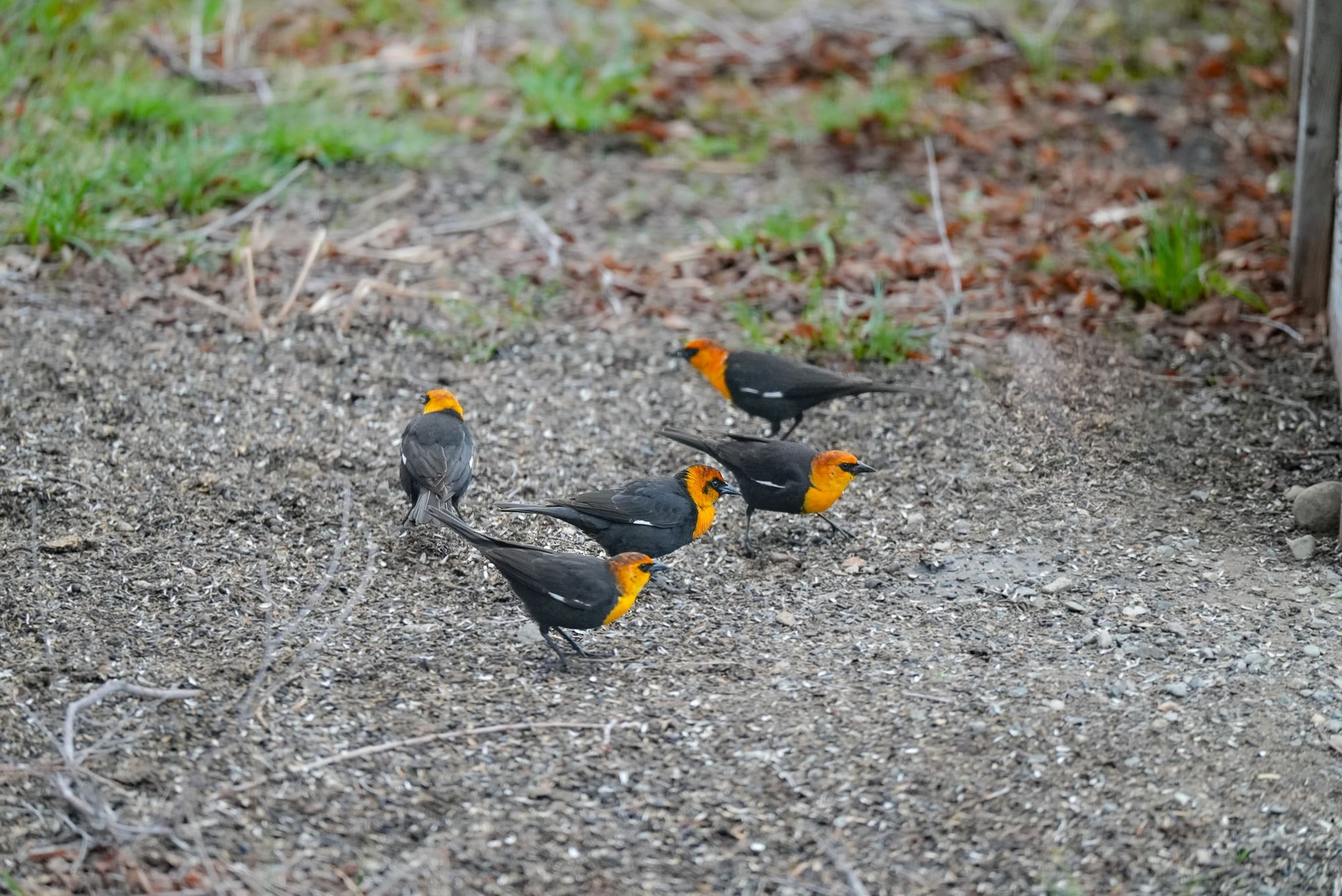
And speaking of arrivals, a large tight flock of 64 white-fronted geese stopped briefly at Big Twin Lake on April 27. It's fairly common to see flocks of geese, swans, and ducks flying high overhead but it's far less common for these groups to stop.
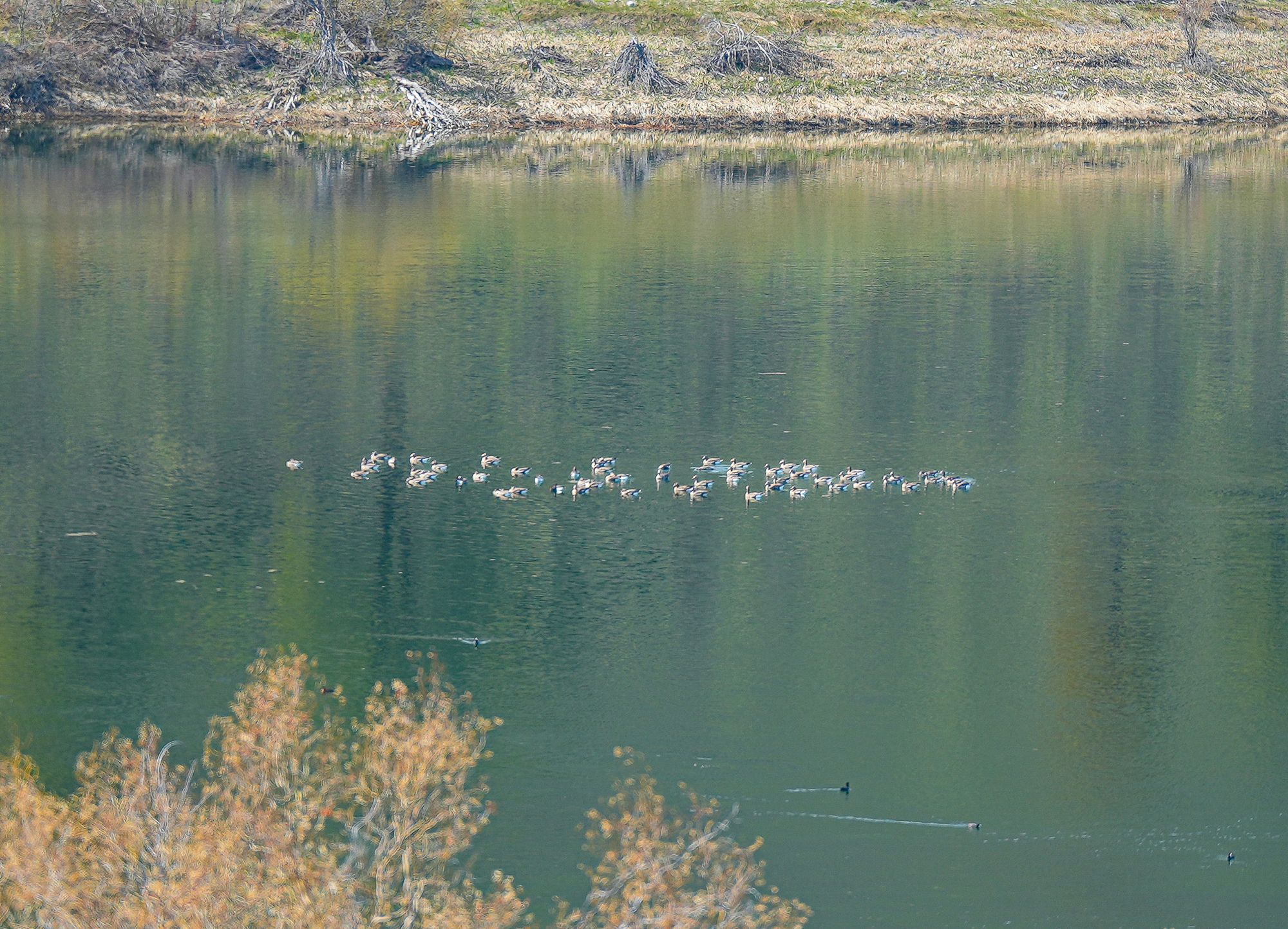
All week there's been constant activity at the nest boxes with violet-green swallows, tree swallows, house wrens, and house sparrows squabbling, scuffling, and all trying to claim the boxes at the same time. A house wren was even methodically removing and dumping things on the ground when other birds put nesting materials into its favorite nest box. I think that as soon as it's decided who is using each box, things will quiet down as pairs turn to the serious business of making nests and laying eggs.
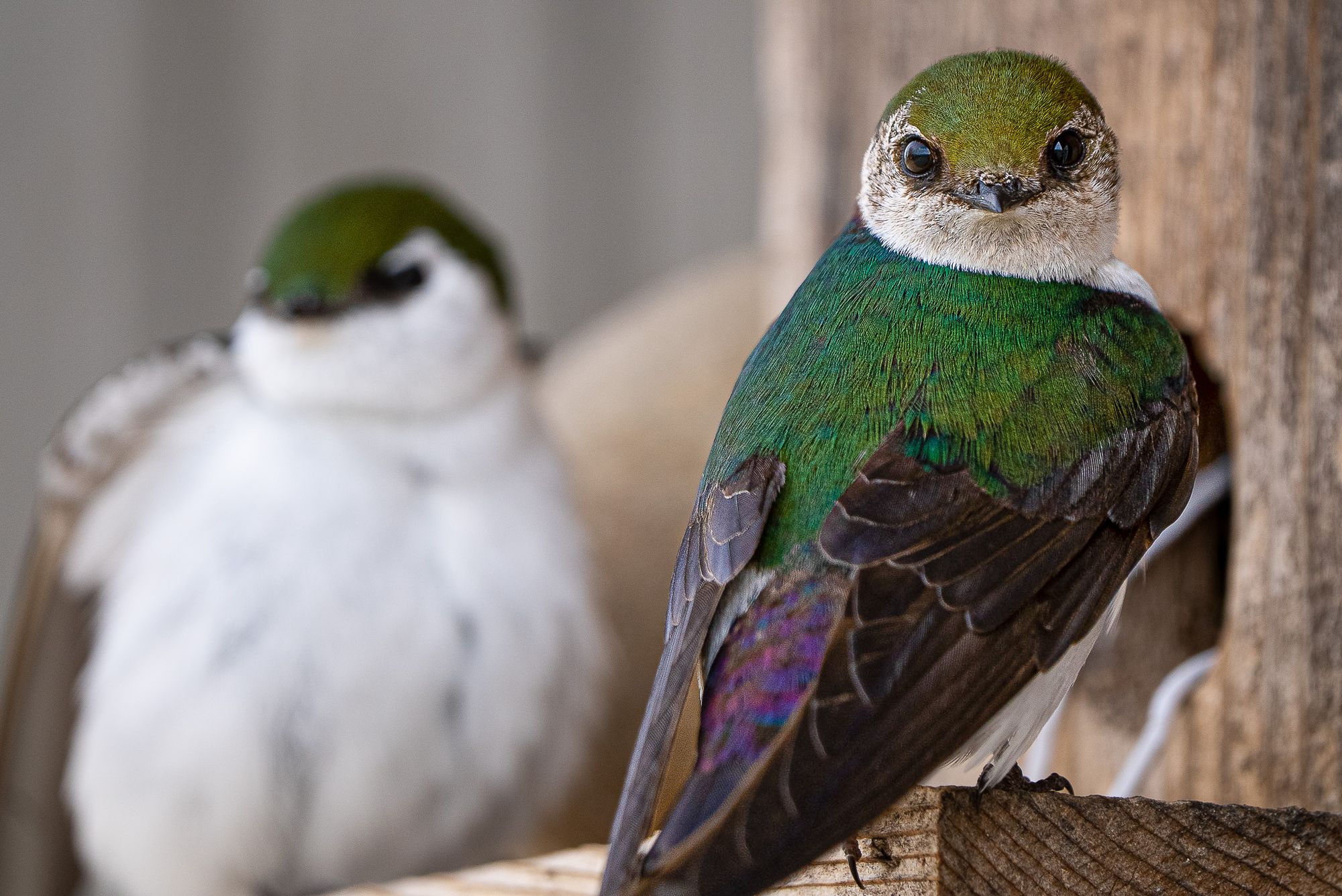
Observation of the Week: Black Meloe

There's a lot to say about the black meloe that was spotted eating fresh shoots on April 25th this week.
If you see one of these beetles they're hard to miss because they're large, black, and look grotesquely misshapen. They are over an inch long with huge, swollen abdomens that dwarf their tiny wing covers (elytra). Adults might be seen wandering around in search of plants to eat, especially flowers in the sunflower, morning glory, legume, and nightshade families.
So far so good, but the fourteen species of Meloe found in the Pacific Northwest are part of the blister beetle (also called oil beetle) family which is notorious for two reasons.
Blister (oil) beetles ooze oily secretions from their knee joints when they're disturbed and these secretions are very high in cantharidin, which is as toxic as cyanide or strychnine and causes extreme, long-lasting blisters and burns on your skin. Historically, this substance was called "Spanish fly" and was ingested to promote erections in men, but unfortunately it also creates severe, irreversible damage to kidneys and reproductive systems. There is enough cantharidin in a couple of these beetles to be fatal to someone.

Only male blister beetles produce cantharidin and they transfer it, along with sperm, when they mate with females and then females add it to their eggs as a defense mechanism (they lay up to 10,000 eggs).
Things get weird when these eggs hatch, because the larvae go through something called hypermetamorphosis, which means they have an extra larval stage called the triungulin. One prominent biologist says that these highly mobile triungulins "behave like shrews on amphetamines, and run up and down plants, seemingly without purpose."

But at some point, the triungulins gather in a mass that mimics the shape of a female bee then release pheromones that imitate the smell of a female bee. This attracts male bees that try to mate with the mass of triungulins who run onto the bee and hitch a ride. When the male eventually finds and mates with an actual female bee, the triungulins run onto the female and ride with her to her underground nest where they settle in and eat her eggs, babies, and the pollen balls she brings to the nest to feed her babies.
It's all pretty gruesome, but if anything these beetles play some unexpected roles. There are a surprising variety of other insects and animals that eat or lick these beetles to obtain cantharidin, either because it protects them from being eaten or else kills parasites in their bodies. Some insects are so specialized for this lifestyle that they are called cantharidiphiles, and if you put out some cantharidin extract they quickly arrive and eat as much as they can. It's also worth noting that white-breasted nuthatches collect blister beetles, crush them up and smear them around the entrance of their nest holes to deter squirrels and chipmunks that try to eat baby birds.
